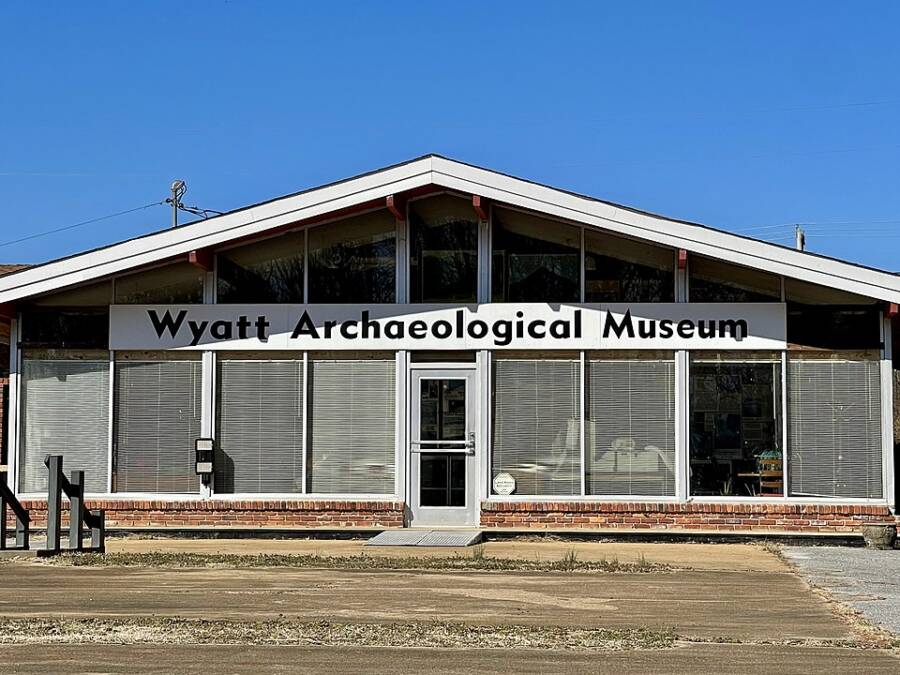Over the course of 22 years, Ron Wyatt claimed to have uncovered the original Ten Commandments, the Ark of the Covenant, and even a sampling of Jesus Christ's blood.
To some, Ron Wyatt seemed like a real-life Indiana Jones — and perhaps even “God’s archaeologist.” Despite not having a formal archaeology background, Wyatt dedicated much of his time trying to uncover Bible-related artifacts and landmarks in the Middle East.
In all, he claimed to have made nearly 100 Biblical discoveries, including the remains of Noah’s Ark, Goliath’s sword, the original Ten Commandments, the Ark of the Covenant, and even the dried blood of Jesus Christ.
This made him a tabloid sensation in the late 20th century, but most experts did not take his alleged discoveries seriously. Biblical scholars, professional archaeologists, and even some creationists strongly criticized Wyatt, believing that he was naïve at best and a fraud at worst.
Was there any truth at all behind his claims — or did he make everything up? Here’s a peek at the life and alleged discoveries of Ron Wyatt.
How Ron Wyatt Became An Amateur Christian Archaeologist And Explorer

YouTubeRon Wyatt made more than 100 trips to the Middle East in the hopes of uncovering Biblical relics.
Ron Wyatt was born on June 2, 1933. Little is known about his early years, but by the time he was in his late 20s, he was working as a nurse anesthetist in Madison, Tennessee. At the age of 27, Wyatt stumbled across a picture in Life Magazine that would change the course of his life forever.
That picture showed the famous Durupinar site in eastern Turkey, a geological formation that resembles a large boat. In the 1960s, many people were speculating that the site could be the landing place of Noah’s Ark — or perhaps even the remains of the Biblical boat itself.
This idea stirred Wyatt’s imagination and inspired him to travel to Turkey to see the incredible sight in person in 1977. He soon became determined to fulfill his theory that the formation was indeed the site of the Ark.

Wikkiwooki/Wikimedia CommonsThe Durupinar site in eastern Turkey in 2019.
He embarked on multiple investigations of the site, claiming to have discovered evidence that his theory was correct, including “deck timber” and “anchor stones” from the Ark. But professional scientists who joined Wyatt on some of his early inspections were not convinced by his supposed discoveries. And according to the Christian website Answers In Genesis, a laboratory that reportedly tested Wyatt’s “timber” was not able to definitively identify it as timber, much less timber from Biblical times.
Despite his lack of independently confirmed evidence, Wyatt remained adamant that the Durupinar site was indeed the landing place of Noah’s Ark. He continued to travel to the Middle East for the remainder of his life — and each time he went, he seemed to uncover something new.
Ron Wyatt’s Controversial Discoveries
In total, Ron Wyatt spent about 22 years traveling to the Middle East as an amateur archaeologist, exploring Biblical sites and claiming that he’d found numerous objects and landmarks from the Old and New Testaments.
According to the Christian Courier, Wyatt said that he found 92 artifacts and sites, including the Ten Commandments, the sites of Sodom and Gomorrah, Jesus Christ’s tomb, Goliath’s sword, the exact location of the Red Sea Crossing, the Ark of the Covenant, and a sampling of Christ’s dried blood.
Wyatt eventually became a tabloid sensation, appearing in publications like the National Enquirer to promote his alleged findings. But none of his supposed discoveries were ever verified by professional archaeologists.
He likely expected pushback from secular scientists, but Christian archaeologists were just as skeptical of his claims. In fact, some of the strongest critiques against his work came from scholars who belonged to Wyatt’s religious denomination, the Seventh-day Adventist Church.

Daderot/Wikimedia CommonsA depiction of the burning cities of Sodom and Gomorrah by the Dutch Golden Age painter Jacob de Wet II. Ron Wyatt claimed to have uncovered ash from buildings in these doomed Biblical cities.
As the Christian Courier notes, SDA ministers and brothers Russell R. and Colin D. Standish pointed out that Wyatt’s alleged discovery of the Red Sea Crossing’s location seemed to go against both God and science.
Wyatt said that he’d found the remains of chariots and human bones — apparently from the Pharaoh’s destroyed forces — while scuba diving at approximately 200 feet. But the Bible states the Pharaoh’s forces were destroyed “in the middle of the sea,” which is estimated by experts to be nearly 3,000 feet deep. Not only is that far deeper than where Wyatt was supposedly exploring, but no samples of the chariots or human bones were ever sent to professional scientists for independent testing.
Another alleged discovery critiqued by the Standish brothers was the sampling of Christ’s dried blood, as there are contradicting stories about a “lab” where the blood was tested — in some versions, the lab is located in Nashville, Tennessee, and in other versions, the lab is in Jerusalem. This has led many to question whether this lab — or the sampling — actually existed.
Despite his glaring lack of proof for his discoveries, Wyatt stood by his claims until he died of bone cancer at the age of 66 on August 4, 1999.
Was There Any Truth At All To His Claims?

KFlanz/Wikimedia CommonsSome of Ron Wyatt’s alleged discoveries are on display at Wyatt Archaeological Museum in Cornersville, Tennessee.
Ron Wyatt’s findings have been widely characterized as not credible by professional archaeologists — both Christian and non-Christian — and Biblical scholars. The lack of sound proof combined with an apparent reluctance to share his samples with scientific authorities has led many to believe that Wyatt was either woefully misled during his investigations or that he was simply not telling the truth about what he found.
As for samples that did eventually make their way to reputable labs, the results were not promising. According to Creation Ministries International, someone who was with Wyatt at his alleged Sodom and Gomorrah site sent samples of “ash from buildings” to CMI. So CMI sent the samples to an Australian lab, which reported that the “ash” was not consistent with an ancient incinerated building, but merely a deposit of gypsum-type minerals.
However, there are a few alleged discoveries made by Wyatt that some researchers appear to be more open to exploring further — most notably, the alleged site of Noah’s Ark.
As recently as 2023, scientists claimed to have found “human activity” dating back to Biblical times in the region, along with “clayey materials, marine materials, and seafood.” Though this doesn’t prove that the Ark landed there, it does indicate a continued interest to learn more about the region’s history and potential connection to figures in the Bible.
Still, even if the region was ever confirmed to be the definitive landing place of the Ark, Wyatt wouldn’t have been the one to prove the theory true — and he also wasn’t the one who came up with the idea in the first place.
Nevertheless, Wyatt still has a number of devoted followers who firmly believe in his findings. His YouTube page, ronwyatt.com, counts 137,000 subscribers. And some of his alleged artifacts are on display at his Wyatt Archaeological Museum in Cornersville, Tennessee. But for the time being, the true locations of most Biblical artifacts and landmarks remain a mystery.
After learning about Ron Wyatt, go inside the true story behind the Holy Grail. Then, explore the complicated question of who wrote the Bible.





